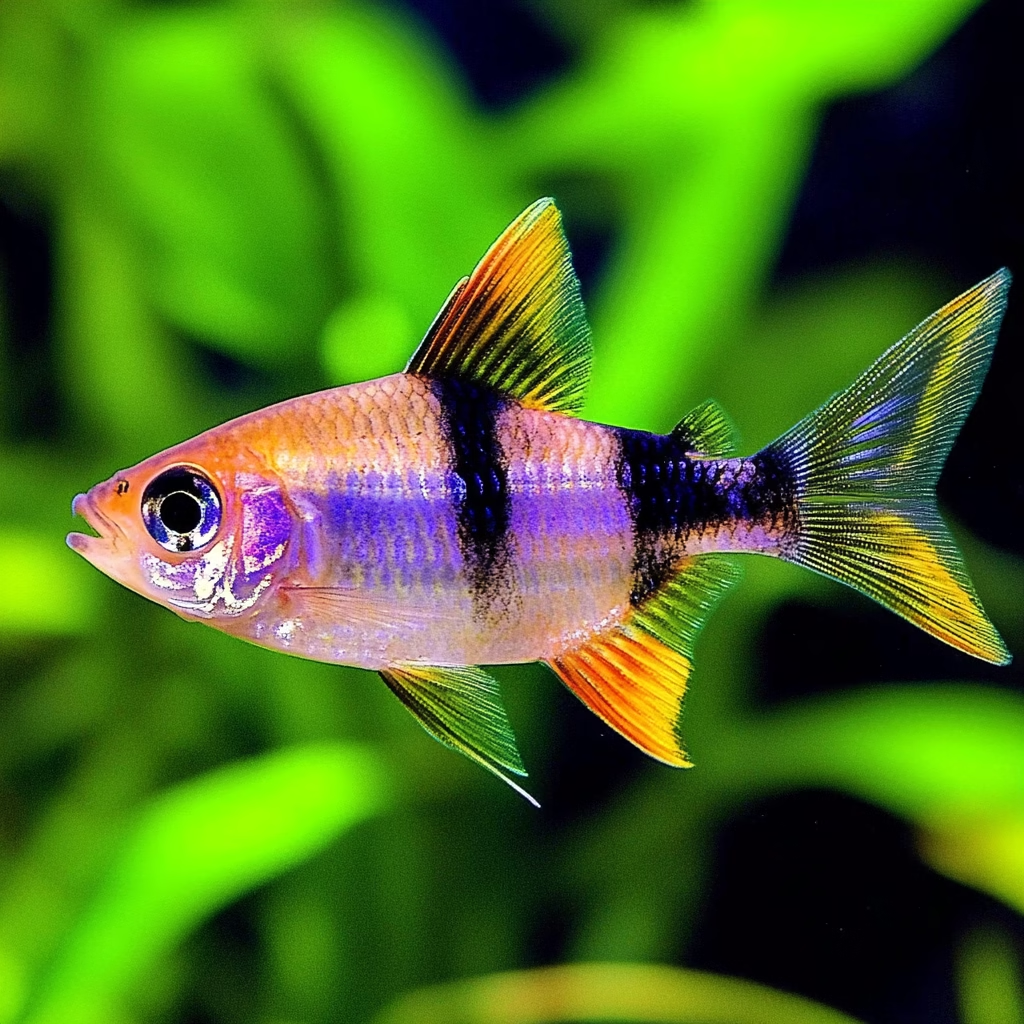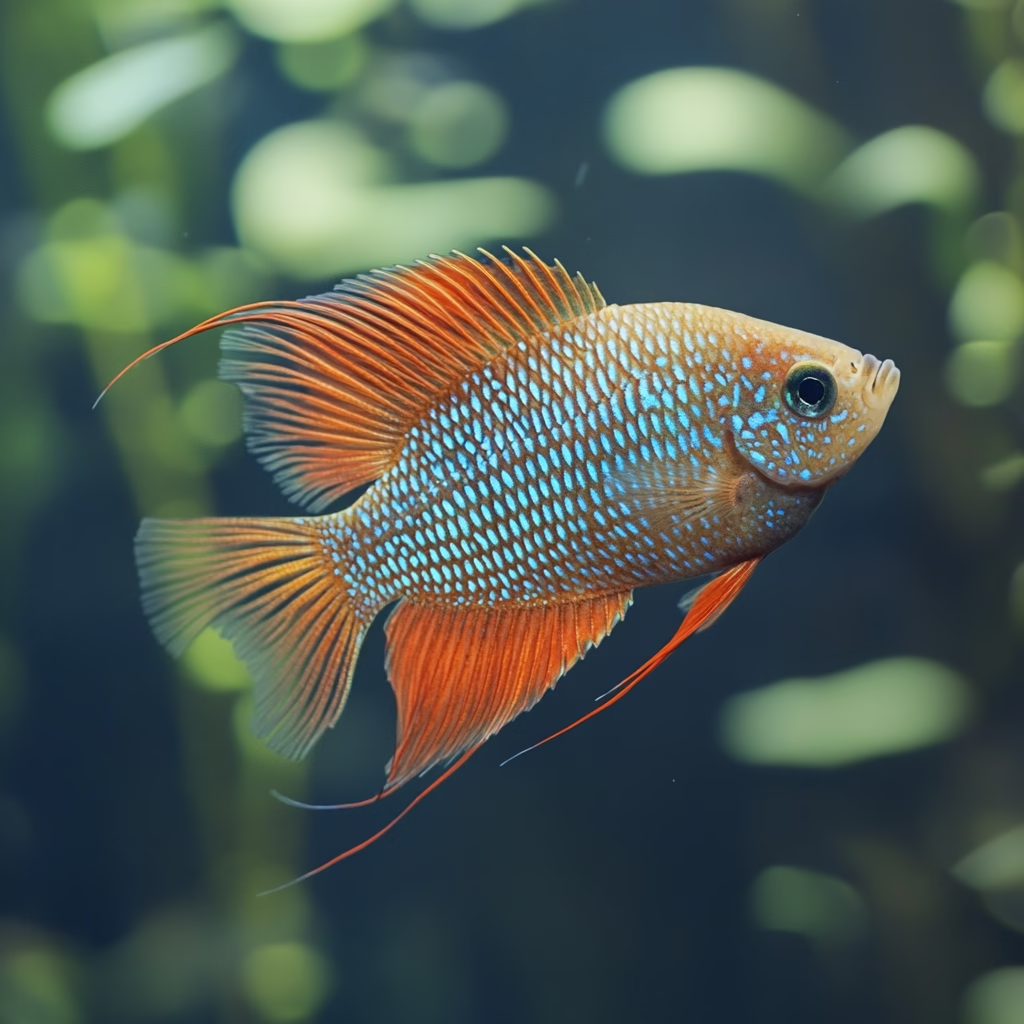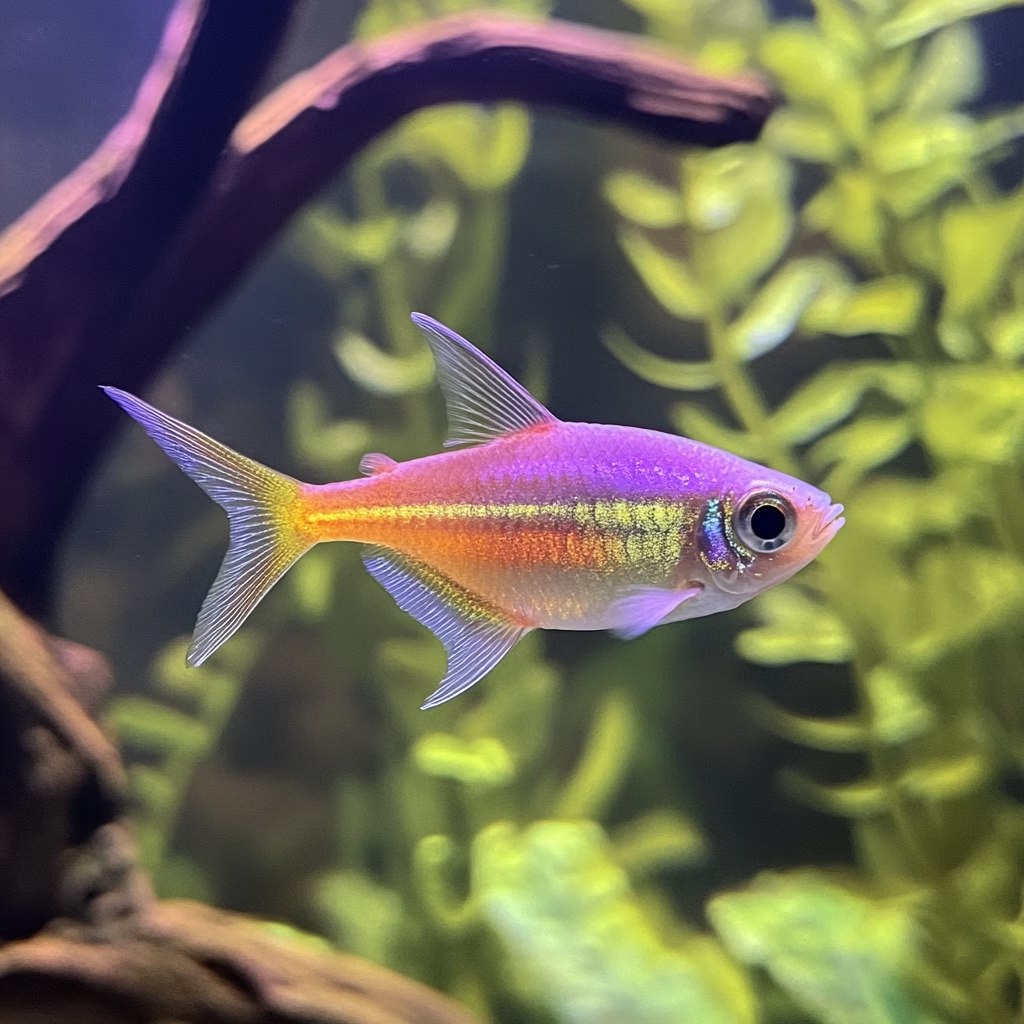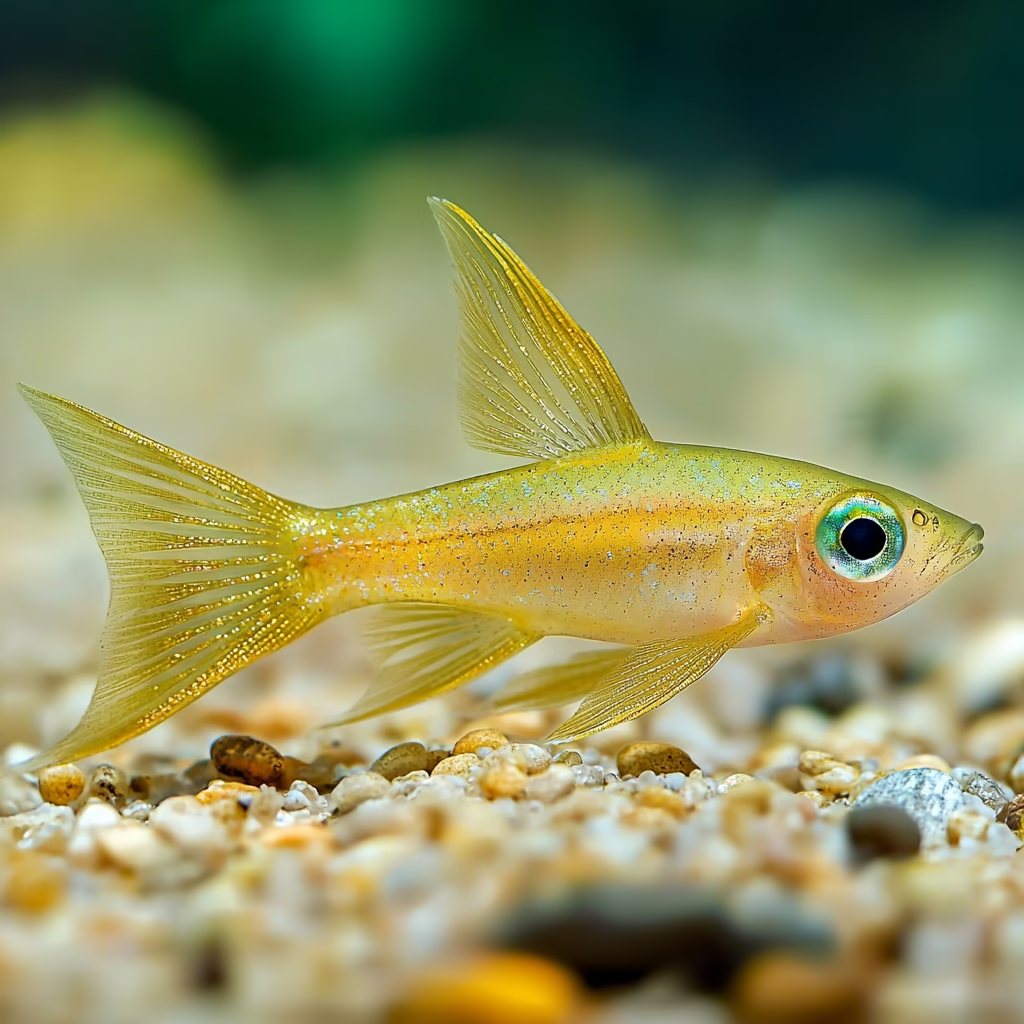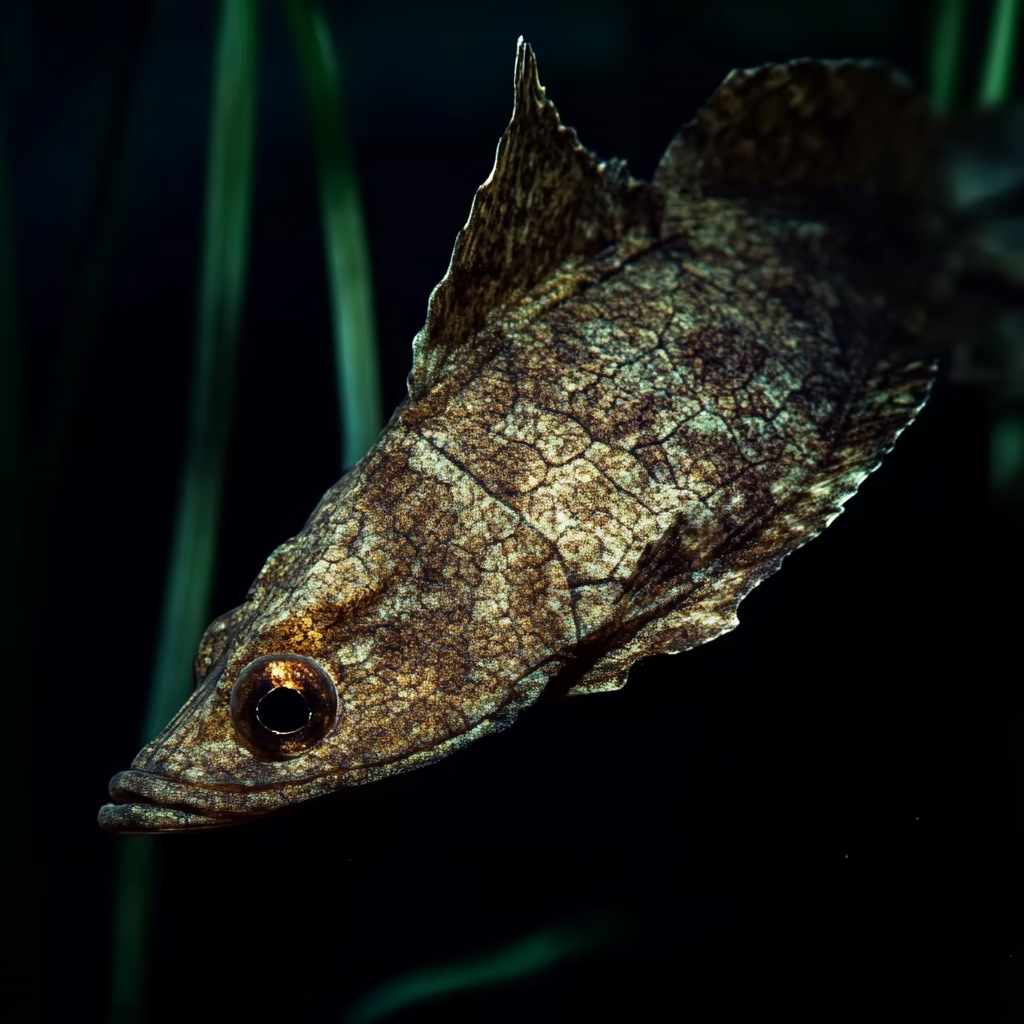Zebra danios are among the most popular freshwater aquarium fish, and for good reason. These small, striped swimmers are not only visually appealing but also remarkably hardy, making them ideal for both novice and experienced fish keepers alike. With their distinctive horizontal stripes and energetic swimming patterns, zebra danios bring life and character to any aquarium setup. This comprehensive guide explores everything you need to know about these fascinating fish, from their natural habitat and behavior to their care requirements and breeding patterns.
What Are Zebra Danios?
The zebra danio (Danio rerio) is a small freshwater fish native to the streams, canals, ponds, and rice paddies of South Asia, particularly regions of India, Bangladesh, Nepal, and Myanmar. They belong to the Cyprinidae family, which also includes popular aquarium fish like barbs and rasboras.
Reaching an average length of 2-2.5 inches (5-6 cm), zebra danios are characterized by their torpedo-shaped bodies adorned with five distinctive blue-purple horizontal stripes running from gill to tail on a silver-gold background. This zebra-like pattern is the source of their common name and makes them instantly recognizable in the aquarium hobby.
Why Choose Zebra Danios for Your Aquarium?
Zebra danios have earned their popularity through a combination of attractive qualities that make them excellent additions to community tanks:
Hardiness and Adaptability
Perhaps the most compelling reason for their popularity, zebra danios are incredibly resilient fish that can tolerate a wide range of water conditions. They’re forgiving of minor fluctuations in water parameters, making them perfect for beginners who are still learning the ropes of aquarium maintenance.
Active Swimming Behavior
Zebra danios are known for their energetic swimming style. They’re primarily top to mid-water swimmers that rarely stop moving, constantly darting around the tank in their characteristic rapid, zigzagging pattern. This active behavior adds visual interest and dynamic movement to any aquarium setup.
Peaceful Community Members
While zebra danios are active and can occasionally chase each other, they’re generally peaceful community fish that get along well with many other species. Their non-aggressive nature makes them compatible with a wide variety of tank mates.
Shoaling Behavior
In the wild, zebra danios live in groups, and this shoaling behavior carries over to aquarium life. Watching a group of 6 or more zebra danios swimming together in coordinated movements is truly a captivating sight.
Scientific Significance
Beyond their appeal as pets, zebra danios have become important model organisms in scientific research. Their transparent embryos and relatively simple genetic makeup have made them valuable for studies in developmental biology, genetics, and neuroscience.
Setting Up the Ideal Zebra Danio Aquarium
Creating the right environment for your zebra danios is essential for their health and happiness. Here’s what you need to know about setting up their aquarium:
Tank Size
Despite their small size, zebra danios need space to swim. A group of 6-8 zebra danios requires a minimum tank size of 10 gallons (38 liters), though a 20-gallon (76 liters) tank is preferable to provide adequate swimming space for their active lifestyle. Remember, these fish are constantly on the move and will appreciate a longer tank that allows for horizontal swimming.
Water Parameters
Zebra danios thrive in the following water conditions:
- Temperature: 64-77°F (18-25°C)
- pH: 6.5-7.5
- Hardness: 5-15 dGH
- Ammonia and nitrite: 0 ppm
- Nitrate: below 20 ppm
While they can tolerate slight variations in these parameters, maintaining stable conditions will help ensure their long-term health.
Filtration and Water Flow
As active swimmers, zebra danios appreciate some water movement in their tank. A filter that creates a gentle current mimics their natural habitat and encourages natural behaviors. However, the flow shouldn’t be so strong that it exhausts them by forcing them to swim against it constantly.
Lighting
Standard aquarium lighting is sufficient for zebra danios. A regular day/night cycle of 8-10 hours of light followed by a period of darkness helps maintain their natural rhythms.
Tank Decoration
When setting up a zebra danio tank, consider including:
- Plants (live or artificial): Provide hiding places while still leaving plenty of open swimming space
- Driftwood or rocks: Create additional hiding spots and break up sightlines
- Fine substrate: Sand or small gravel is preferable as danios occasionally forage near the bottom
The key is to balance decorations with open swimming areas. While zebra danios appreciate some cover for security, they need unobstructed space to engage in their active swimming behavior.
Feeding Your Zebra Danios
Zebra danios are omnivorous and not particularly picky eaters, which contributes to their reputation as easy-to-keep fish. A varied diet will help ensure they receive all the nutrients they need.
Daily Diet
High-quality commercial flake or pellet food formulated for small tropical fish should form the base of their diet. Look for products that list protein as a primary ingredient.
Supplemental Foods
To promote optimal health and coloration, supplement their regular diet with:
- Freeze-dried or frozen foods: Daphnia, bloodworms, brine shrimp
- Live foods: Fruit flies, small worms, live brine shrimp
- Vegetable matter: Blanched spinach or zucchini (occasionally)
Feeding Schedule
Feed your zebra danios small amounts 2-3 times daily, offering only what they can consume in 2-3 minutes. Overfeeding can lead to poor water quality and health problems.
Zebra Danio Tank Mates
One of the appeals of zebra danios is their compatibility with many other peaceful community fish. When selecting tank mates, consider fish that:
- Are peaceful and non-aggressive
- Won’t nip at the danios’ fins
- Can match the danios’ swimming speed or have different swimming zones
- Thrive in similar water conditions
Compatible Tank Mates
Some excellent companions for zebra danios include:
- Tetras (neon, cardinal, ember)
- Rasboras (harlequin, chili)
- Corydoras catfish
- Peaceful gouramis (dwarf, honey)
- Platies and mollies
- Small peaceful loaches
Incompatible Tank Mates
Avoid housing zebra danios with:
- Large or aggressive fish that might view them as prey
- Slow-moving fish with elaborate fins (like bettas or fancy guppies) that might get stressed by the danios’ constant activity
- Territorial bottom-dwellers that might become aggressive when danios venture to lower levels of the tank
Breeding Zebra Danios
Zebra danios are relatively easy to breed in home aquariums, which adds another dimension to keeping these fascinating fish.
Identifying Males and Females
To breed zebra danios, you’ll first need to determine their sex:
- Females: Larger, rounder bodies, especially when carrying eggs; stripes may appear slightly less vibrant
- Males: Slimmer, more torpedo-shaped bodies; more intense coloration; fins may be more pointed
Breeding Setup
A dedicated breeding tank offers the best chance of success:
- 5-10 gallon tank with a sponge filter
- Marbles or a mesh at the bottom to protect eggs from being eaten
- Plants (live or artificial) for spawning sites
- Temperature slightly warmer than the main tank (around 78-80°F or 25-27°C)
The Breeding Process
- Condition the breeding pair or group with protein-rich foods for about a week
- Introduce the conditioned fish to the breeding tank in the evening
- Spawning typically occurs at dawn; females can lay hundreds of eggs that fall to the tank bottom
- Remove the adult fish after spawning to prevent them from eating the eggs
- Eggs hatch in approximately 48-72 hours
- Fry become free-swimming after another 2-3 days
- Feed fry with infusoria or commercial fry food until they’re large enough for baby brine shrimp
Common Health Issues
While zebra danios are generally hardy, they can still experience health problems. Being aware of common issues can help you address them promptly:
Ich (White Spot Disease)
Recognizable by white spots resembling salt grains on the fish’s body, ich is a common parasite that can affect danios, especially when stressed. Treatment involves raising the tank temperature (gradually) and using appropriate medications.
Fin Rot
Characterized by deteriorating or frayed fins, fin rot is typically caused by poor water quality or injury. Regular water changes and antibacterial treatments can help resolve this condition.
Mycobacterial Infection
Zebra danios can be susceptible to mycobacterial infections, which may cause weight loss, spine deformities, or unusual behavior. Unfortunately, these infections are difficult to treat and may require euthanizing affected fish to prevent spread.
Prevention
The best approach to keeping your zebra danios healthy includes:
- Maintaining excellent water quality with regular testing and water changes
- Providing a balanced, nutritious diet
- Quarantining new fish before adding them to your main tank
- Avoiding overcrowding
- Ensuring the tank environment matches their natural needs
Zebra Danio Variants
The popularity of zebra danios has led to the development of several captive-bred variants:
Longfin Zebra Danio
These fish have the same distinctive striping pattern but feature elongated, flowing fins that create an elegant appearance as they swim.
Golden Zebra Danio
A color variant lacking the dark melanin pigmentation, resulting in a golden body with lighter stripes.
Leopard Danio
Once considered a separate species but now recognized as a spotted variety of zebra danio, featuring spots rather than stripes.
GloFish® Danio
Genetically modified zebra danios that fluoresce in vibrant colors like red, green, blue, purple, and orange under blue light, created originally for scientific research.
Conclusion: Why Zebra Danios Deserve a Place in Your Aquarium
Zebra danios offer an ideal combination of beauty, hardiness, and interesting behavior that makes them perfect for aquarists of all experience levels. Their active swimming, peaceful nature, and striking appearance can transform any aquarium into a dynamic underwater display.
Whether you’re setting up your first tank or adding to an established community aquarium, zebra danios provide an excellent option that’s relatively low-maintenance yet highly rewarding. With proper care, these charming fish can live for 3-5 years, providing long-term enjoyment and a fascinating glimpse into the underwater world.
By understanding their needs and providing the right environment, you’ll be rewarded with a vibrant, energetic group of fish that bring constant movement and interest to your aquatic display. Consider adding a school of zebra danios to your next aquarium project – you won’t be disappointed with these classic aquarium favorites.


